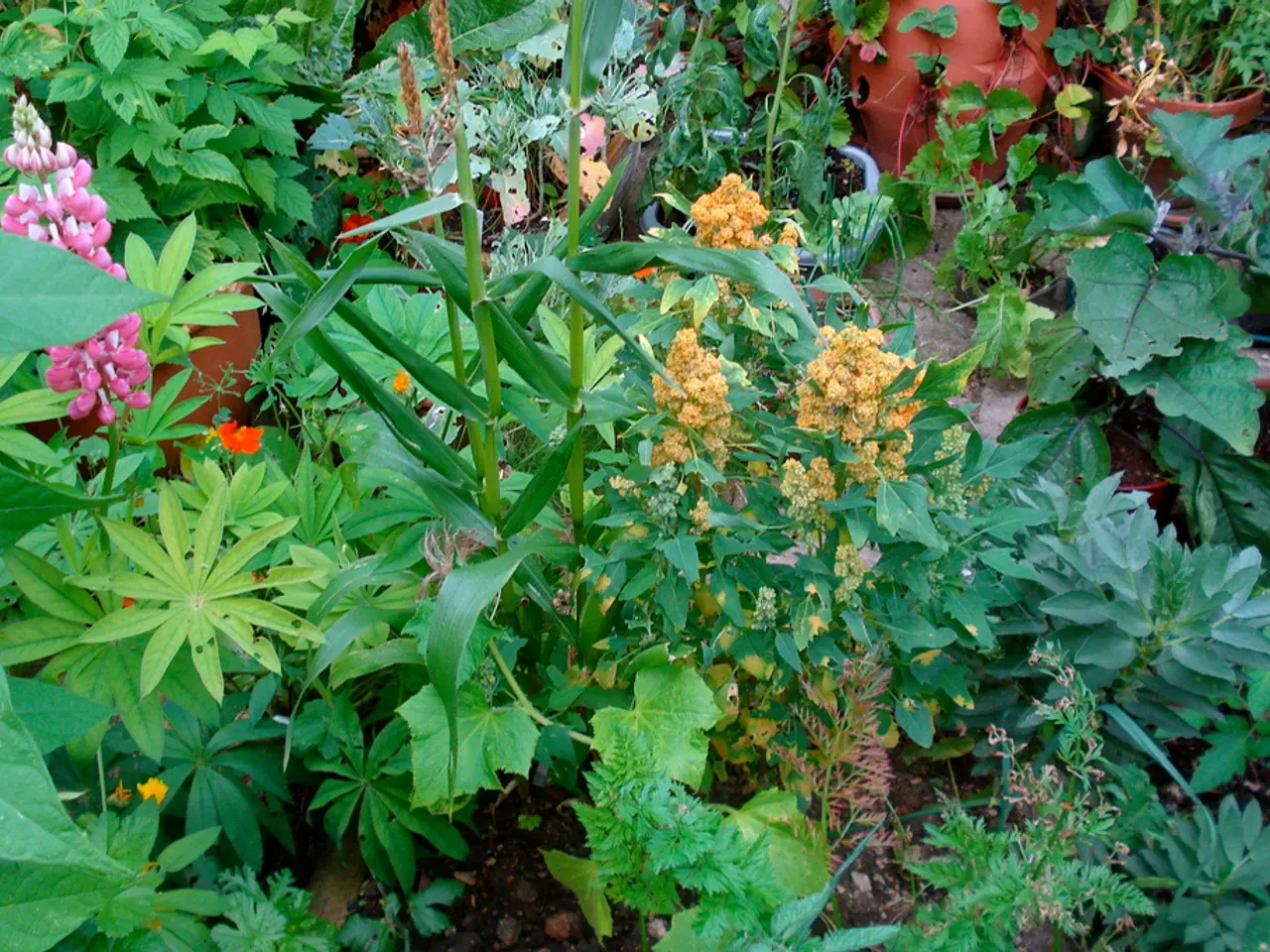Achieve More Juicy and Straight Carrots With This Easy Technique
Smarten up your carrot cultivation game with these essential tips from gardening YouTuber @Jacquesinthegarden! Get ready to grow plump, healthy carrots at home without any hiccups.
First off, carrots aren't high-maintenance divas, but they are picky about their living spaces. Their roots demand space, quite literally, to extend deeply into the soil without bumping into obstacles. If the soil is compact or rocky, the roots will twist, split, or surrender before reaching their full potential.
To tackle soil issues, follow these actionable steps:
Step One: The Spa Treatment - Fork It!
For in-ground growing, Jacques advises beginning with a good forking. Before planting, take a garden fork and loosen the soil down to at least 10-12 inches. Instead of turning it over like you'd do for other crops, simply insert the fork, wiggle it back and forth, and gently move across your bed like you're giving it a massage. This effortlessly creates a loose, airy structure that allows carrot roots to expand long and straight, warding off resistance. It's especially crucial if your soil has a tendency to crust or compact too quickly.
Step Two: Keep It Moist - Hydration is Key
Dry soil is another top reason carrots wind up short or bitter. Seeds need consistent moisture to sprout, and young roots require it to grow strong.
Before sowing, give your garden bed a thorough soak. Not too much to create a puddle, but enough that the moisture penetrates deep. Afterward, establish a regular watering routine, especially during dry spells. Uneven watering results in cracks, splits, or bitter-tasting carrots. Strive to maintain the Goldilocks zone of "just right" moisture throughout the growth cycle.
Step Three: Form Rows - Furrow It!
With the soil loose and moist, it's time to plant your seeds. Try using the edge of a wooden board on top of the soil to create shallow furrows. This light pressure flattens the bed gently and establishes neat, clean rows for your seeds to nestle in - way more manageable and tidier than dragging a stick or finger across.
Step Four: Time to Plant - Cover and Sow
Deposit your carrot seeds in the furrows you've created. Keep them tight (about 1-2 inches apart if you're row planting, or scatter if you plan to thin later). Carrot seeds are tiny, so don't worry too much about precision.
Once you've planted your seeds, cover your furrows with a flat board, large leaf, or piece of cardboard to keep the soil shaded and moist during germination. Carrots can take anywhere from 7-21 days to sprout, so be sure to check frequently.
As soon as you spot those delicate green threads peeking through, carefully remove the covering and let the seedlings drink up the light. By harvest time, you'll be able to enjoy luscious, jewel-like carrots.
Thin the Herd - With Mercy for None!
When seedlings reach about 2 inches tall, thin them out to about 2-3 inches apart. It may feel cruel, but it's crucial if you want large, healthy roots.
Seal in the Moisture - Mulch It!
After germination, surround the sprouts with mulch to retain moisture and block weeds. Straw, shredded leaves, or grass clippings are terrificmulching choices.
Say No to Fresh Manure - Skip It!
Fresh manure might cause forked or hairy roots. Compost is fine, but be mindful of nitrogen levels. Too much nitrogen can lead to leafy growth at the expense of root development.
Adhere to these pointers, and you'll soon be boasting carrots that make the Farmer's Market envious!
Garden Guru
The tips above come from horticultural expert Bonnie Ferrero, a connoisseur of hiking, cooking, gardening, and home decorating. Her diverse interests and passions allow her to tap into her creative spirit and establish a strong bond with nature. Embracing a holistic approach to life, she balances her professional accomplishments, community involvement, and personal pursuits, inspiring others with her dedication to personal growth, service, and overall well-being.
Additional Info
- Soil Health: Focus on creating loose, deep, free-flowing, and nutrient-rich soil conditions by adding sand, peat moss, vermiculite, compost, or other organic matter to the planting area.
- Soil Preparation: Till, break up, and mix the soil thoroughly, and remove any stones, debris, or obstacles that might hinder root growth. For in-ground growing, use a garden fork to loosen the soil to at least 12 inches deep before planting.
- Watering: Ensure the soil remains consistently moist but not overly wet, especially during germination. Water regularly, aiming to maintain an ideal moisture level throughout the growth cycle.
By focusing on these fundamental factors, you can cultivate the perfect environment for straight, healthy carrot roots to grow and thrive at home. Now, put your green thumb to work and get ready to harvest some bountiful beauties!
- Loosen the soil in the garden bed before planting carrots using a garden fork, creating a loose, airy structure that allows roots to expand long and straight.
- Before sowing carrot seeds, give the garden bed a thorough soak, maintaining the Goldilocks zone of "just right" moisture throughout the growth cycle.
- After the soil is loose and moist, use a wooden board to create shallow furrows for planting carrot seeds, keeping them about 1-2 inches apart.
- After carrot seedlings reach about 2 inches tall, thin them out to about 2-3 inches apart to allow for large, healthy roots.
- Surround carrot sprouts with mulch to retain moisture and block weeds after germination, using straw, shredded leaves, or grass clippings as terrific mulching choices.




